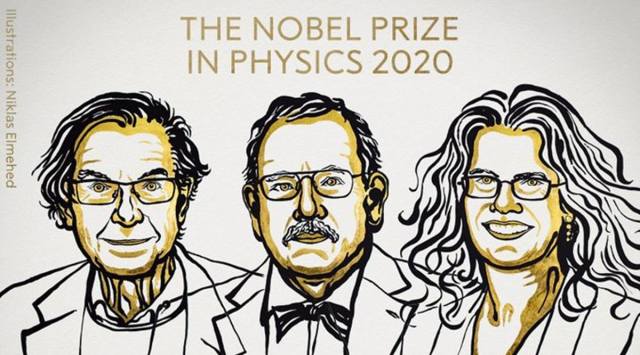- India
- International
Physics Nobel Prize awarded to British, German and American scientists for black hole research
"Penrose showed that the general theory of relativity leads to the formation of black holes. Genzel and Ghez discovered that an invisible and extremely heavy object governs the orbits of stars at the centre of our galaxy. A supermassive black hole is the only currently known explanation," the statement said.
 Americans Harvey J Alter and Charles M Rice, and British scientist Michael Houghton were awarded the Nobel Price for Medicine. (Twitter/NobelPrize)
Americans Harvey J Alter and Charles M Rice, and British scientist Michael Houghton were awarded the Nobel Price for Medicine. (Twitter/NobelPrize)The Royal Swedish Academy of Sciences, which confers the Nobel Prize, announced that this year’s award for Physics will go to three scientists: British, German and an American astrophysicists for their discoveries about the intriguing phenomenon of the universe, the black hole.
The academy has decided to award this year’s prize with one half to Roger Penrose and the other half jointly to Reinhard Genzel and Andrea Ghez.
“Penrose showed that the general theory of relativity leads to the formation of black holes. Genzel and Ghez discovered that an invisible and extremely heavy object governs the orbits of stars at the centre of our galaxy. A supermassive black hole is the only currently known explanation,” the statement said.
The prize amount is 10 million Swedish kronor (about Rs 8,22,85,318).
Penrose employed mathematical methods in his proof that black holes are a direct consequence of Albert Einstein’s general theory of relativity.

READ | Nobel Medicine Prize 2020: Three scientists awarded jointly for Hepatitis C virus discovery
In January 1965, ten years after Einstein’s death, Penrose proved that black holes can form and described them in detail; at their heart, black holes hide a singularity in which all the known laws of nature cease. His groundbreaking article is still regarded as the most important contribution to the general theory of relativity since Einstein.
Genzel and Ghez, using the world’s largest telescopes, developed methods to see through the huge clouds of interstellar gas and dust to the centre of the Milky Way. Stretching the limits of technology, they refined new techniques to compensate for distortions caused by the Earth’s atmosphere, building unique instruments and committing themselves to long-term research. Their pioneering work has given us the most convincing evidence yet of a supermassive black hole at the centre of the Milky Way.
David Haviland, chair of the Nobel Committee for Physics, said: “The discoveries of this year’s Laureates have broken new ground in the study of compact and supermassive objects. But these exotic objects still pose many questions that beg for answers and motivate future research. Not only questions about their inner structure, but also questions about how to test our theory of gravity under the extreme conditions in the immediate vicinity of a black hole”.
Apr 18: Latest News
- 01
- 02
- 03
- 04
- 05





























